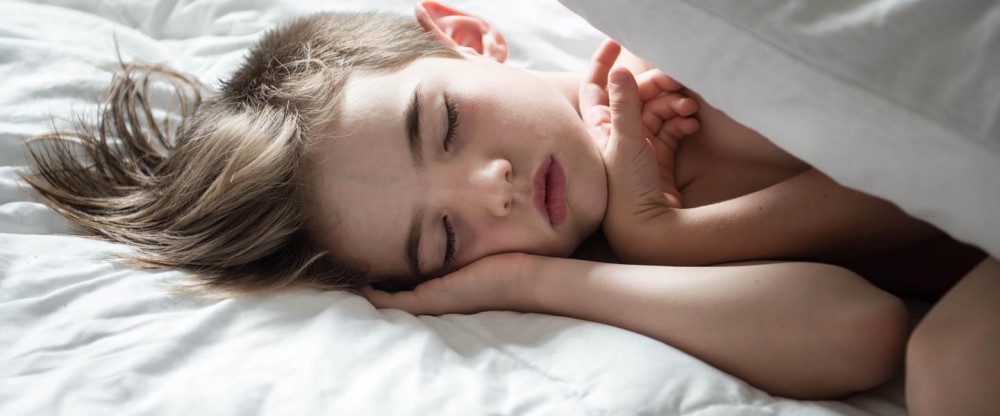Three Things You Need to Know About Your Child’s Sleep Environment

A child’s sleep environmentmay differ widely across cultural and social settings. Although the presence and use of ‘bedroom electronics’ has generated much recent (and deserved) attention, it is important to recognize that other characteristics of the sleep environment may also influence children’s sleep, making some environments more “sleep friendly” than others.
We asked Jim Spilsbury, PhD, Case Western Reserve University, to weigh in on what recent literature says about noise, light and temperature, the sleep environment and its effect on today’s modern family.
It is important to state up front that much of our knowledge about the relationship between these characteristics and sleep comes from clinical experience and studies focused mainly on adults. More research on the effects of noise, light and temperature on the sleep environment is needed, particularly with children.
Noise
Noise generated from other parts of the household (e.g., a living room with a television, or dining room where household members socialize late into the evening) may make it more difficult for children to fall asleep or stay asleep. Also, potentially sleep-disturbing household noise may arise when family work schedules necessitate departures to work, arrivals from work, and food preparation at times when children are in bed.
Of course, not all disruptive noise originates from the household. For example, living close to air, train, or road traffic routes may disturb residents’ sleep. Also, persons may live near noisy industrial or commercial areas. Moreover, “neighbor noise” – defined as noise generated by neighborhood households – is an increasingly recognized problem in many locations, particularly at night when background noise levels are low or in warmer weather when windows are open. Neighbor noise may include loud music, arguments or fights, barking dogs, house maintenance work, noisy children, and household ventilation and air-conditioning equipment. In some locales, neighbor noise has replaced air or vehicular traffic as the neighborhoods’ most significant noise problem, and research has established that children are sensitive to neighbor noise and may find it annoying.
Light
Light levels in the sleep environment may disrupt children’s sleep. Similar to noise, unwanted light may emanate from within or outside the household. Complete darkness isn’t necessarily desirable: a dim nightlight can make the room more comfortable for younger children.
Temperature
Children and teens generally sleep better in a room that is cool, but not too cold: temperature extremes in either direction may make sleeping more difficult. Temperature can become especially important in circumstances when families lack options to make the environment more comfortable: e.g., blankets, comforters, or adequate room heating in cold temperatures; fans, air conditioning, or open windows in hot temperatures. Sometimes, concerns about family security trump physical comfort, such as when families keep windows of bedrooms without air-conditioning or fans closed in hot summer months to deter crime.
Changing specific features and practices associated with the sleep environment is generally part of the strategy of health-care providers to improve sleep. Keeping noise, light, and temperature in mind, a “sleep friendly” environment is generally one that is cool, dark, and quiet.
Citations:
- Haines MM, Brentnall SL, Stansfeld SA, Klineberg E. Qualitative responses of children to environmental noise. Noise & Health 2003;5:19-30.
- Mezick EJ, Matthews KA, Hall M, Strollo PJ, Buysse DJ, Kamarck TW, Reis SE. Influence of race and socioeconomic status on sleep: Pittsburgh SleepSCORE Project. Psychosomatic Medicine. 2008;70:410–416.
- Mindell JA, Owens JA. A clinical guide to pediatric sleep: Diagnosis and management of sleep problems. Philadelphia, PA: Lippincott Williams & Wilkins, 2003.
- Omlin S, Bauer GF, Brink M. Effects of noise from non-traffic-related ambient sources on sleep: Review of the literature of 1990-2010. Noise & Health. 2011;13:299-309.
The right head support can greatly improve how comfortable you feel in bed.Nearly one-quarter of all workers have shifts that are not during the daytime, and more than two-thirds of these workers have problem sleepiness and/or difficulty sleeping. (NHLBI, 2005) One-third of shift workers state that they sleep less than six hours per night on workdays, and 30 percent report that they only get a good night’s sleep a few night’s per...Explore how today's modern family sets rules for sleep, navigates the use of technology in the bedroom, how parents can...The Electronics and Sleep infographic highlights how technology affects the modern family and how parents can help design a sleep...Orexin receptor antagonists: A new class of sleeping pill Find out more about orexin, and a new type of sleep...Great news: more than three-fourths (76%) of those surveyed say that they had a good night’s sleep at least a...If your child’s bedtime routine during the summer has slipped with staying up late and sleeping in late, it’s never...When it comes to training for sports, many student-athletes and their parents recognize the importance of eating well and exercising...A little one’s pre-bedtime plea for just one more storybook or game of Go Fish may be difficult to resist,...Sleep problems are common among kids who are anxious or who are making a transition to a new school. They...

Source: Internet
